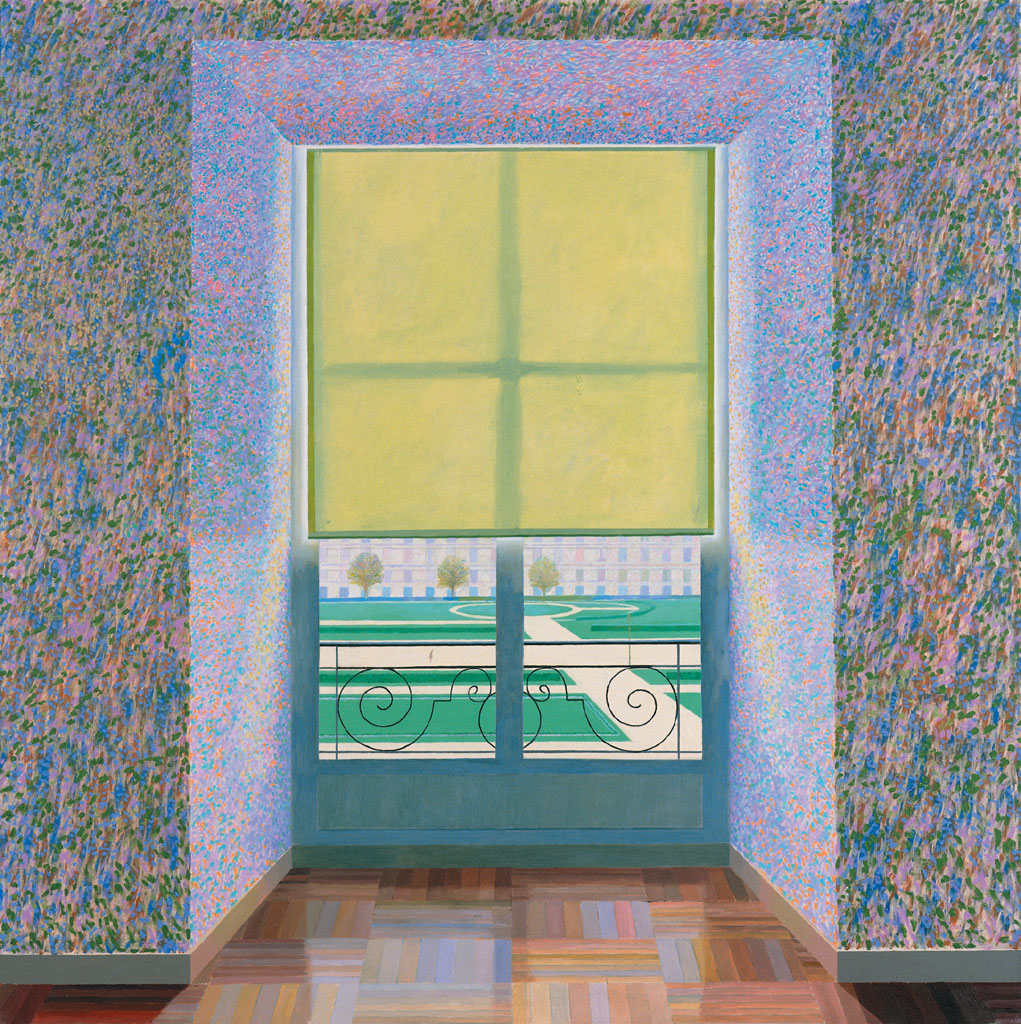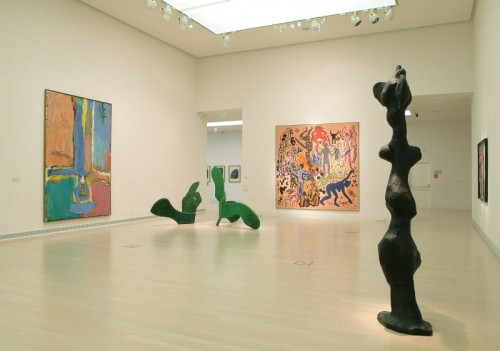Throughout his career, David Hockney has turned to art history with great interest. The painting Contrejour in the French Style itself is a kind of style feat, an homage to the history of the great predecessors, painting and pictorial representation. The artist moved to Paris in 1973, where he lived and worked until 1975. The source of inspiration for the oil painting Contrejour in the French Style came from the Louvre in Paris. It was created in one of the rooms of the Pavillon de Flore, where French graphic works were on show at the time. “The first time I went,” he wrote, “I saw this window with the blind pulled down and the formal garden beyond. And I thought, oh it’s marvellous! marvellous! This is a picture in itself … So I took some photographs of it, made a drawing, and started painting.” The artist painted the wall and the window recess with tiny, dot-like brushstrokes, with the pointillist technique of the Impressionists. He brilliantly depicts the perspective, the light flooding through the window and its reflection on the parquet, as well as the colourful details of the opposite wing of the building soaking in fog or the tiny figure passing through the promenade. The French garden through the window and the ornate railing evoke the age of the palace’s construction, while the yellow-green blind at the centre of the picture – with the cross-shaped motif of the window cross showing through its canvas – may refer to the minimalist, reductive painting aspirations of twentieth-century art.
Krisztina Szipőcs


